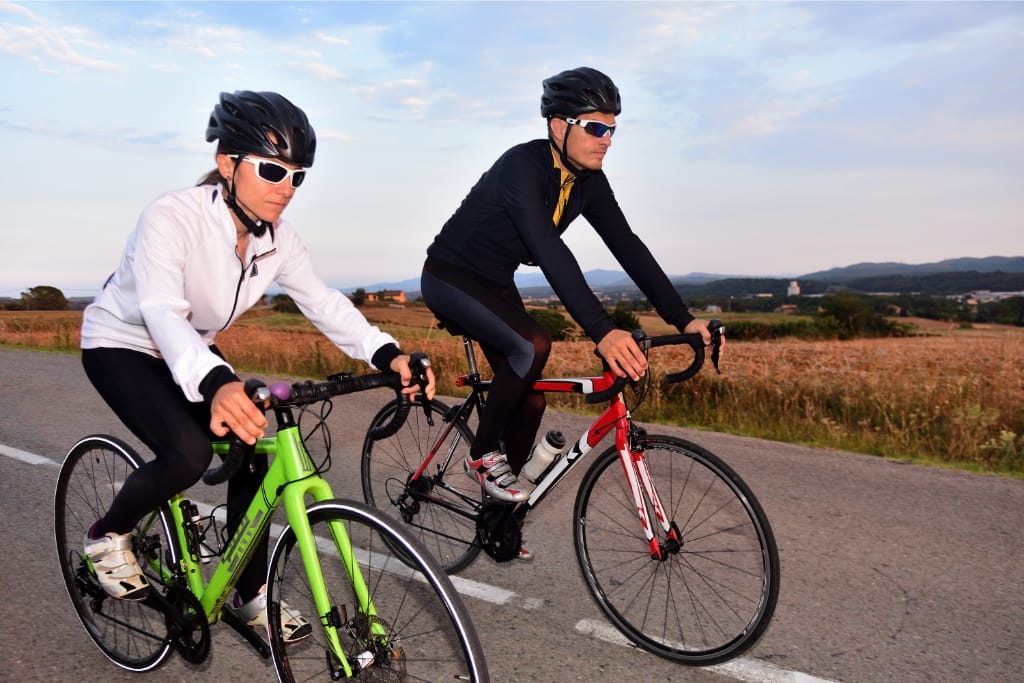Cycling is a fantastic way to stay fit, explore new places, and challenge your endurance.
Whether you're aiming to conquer your first long-distance ride or simply improve your stamina on the bike, understanding a few key principles can make all the difference.
By incorporating smart strategies and techniques into your routine, you’ll be well on your way to reaching your cycling goals and enjoying the incredible benefits that come with them.
Get ready to elevate your performance and build the endurance you need to excel on the road.
1)) Choose The Right Bike
Selecting the right bike is essential for building endurance and ensuring a comfortable ride.
Factors like the frame design, weight, and type of bike play a significant role in how well it suits your needs.
Road bikes are typically ideal for speed and efficiency on paved surfaces, while endurance bikes offer a more relaxed geometry to reduce fatigue on longer rides.
Make sure the bike fits your body properly, as an ill-fitting bike can lead to discomfort and even injuries over time.
Find a bike that aligns with your goals and provides the support you need to maximize your performance on the road.
2)) Maintain Proper Tire Pressure
Proper tire pressure is a crucial factor in ensuring a smooth, efficient, and safe cycling experience.
Tires inflated to the right pressure reduce rolling resistance, allowing you to maintain speed with less effort and improving overall endurance.
Low pressure can make pedaling more strenuous and increase the risk of flats, while overinflated tires may lead to a harsher ride and reduced grip on the road.
Check the manufacturer’s recommended pressure range, typically printed on the tire sidewall, and adjust accordingly based on your weight and riding conditions.
Keeping your tires properly inflated enhances performance and helps you stay comfortable during your rides.
3)) Practice Shifting Gears
Mastering how and when to shift gears can significantly improve your efficiency and endurance on the bike.
Shifting to a lower gear when climbing hills reduces strain on your muscles, allowing you to maintain a steady cadence and conserve energy.
On flat terrain, using higher gears helps you generate more speed without overexerting yourself.
Anticipate changes in terrain and adjust your gears proactively to avoid sudden, strenuous efforts.
Consistent practice will help you develop a smoother transition between gears, keeping your ride steady and enabling you to tackle varied routes with greater confidence and control.
4)) Focus On Cadence
Maintaining a consistent cadence is a fundamental aspect of efficient cycling and building endurance.
Cadence refers to the number of pedal revolutions per minute (RPM), and most cyclists shoot for a sweet spot of around 80-100 RPM.
Riding with too low of a cadence can overwork your muscles, while an excessively high cadence may leave you feeling inefficient.
To find the right balance, practice shifting gears to keep your cadence steady across various terrains and conditions.
By focusing on cadence, you’ll develop a smoother pedaling rhythm, improve energy conservation, and reduce the risk of muscle fatigue during long rides.
5)) Fuel And Hydrate Smartly
Proper nutrition and hydration are critical components of maintaining energy levels and building endurance during cycling.
Consuming a balanced mix of carbohydrates, proteins, and fats provides the fuel your body needs for sustained effort while staying hydrated ensures optimal performance and prevents fatigue.
Bring energy bars, gels, or snacks for longer rides to replenish lost nutrients.
Drink water at regular intervals and consider using electrolyte drinks to replace the salts lost through sweat.
By fueling and hydrating smartly, you’ll keep your body energized, remain focused, and be better equipped to tackle even the most challenging rides.
6)) Master Basic Bike Handling
Mastering basic bike handling skills is essential for safe, efficient, and confident cycling, especially as you tackle longer and more challenging rides.
Key techniques include maintaining balance, steering smoothly, and braking effectively to handle varying road and traffic conditions.
Practice using both brakes to adjust your speed gradually rather than stopping abruptly, as well as perfecting cornering techniques by leaning into turns for better control.
Work on navigating obstacles or sudden changes in the terrain by staying alert and using subtle weight shifts.
Developing these fundamental skills will enhance your ability to ride safely and efficiently, allowing you to fully enjoy the cycling experience.
Pro-Tip: Always prioritize safety when road cycling by wearing a properly fitted helmet, as it significantly reduces the risk of head injuries in case of an accident.
Use reflective clothing or accessories to enhance visibility, especially during low-light conditions.
Equip your bike with front and rear lights, and consistently follow traffic laws to stay predictable to other road users.
Taking these precautions ensures a safer ride and helps you enjoy your cycling adventures with greater peace of mind.
7)) Plan Gradual Distance Increases
Building endurance and stamina requires progressively increasing the distance of your rides over time.
Start with manageable distances that match your current fitness level to avoid overexertion or injury.
Gradually add a few miles each week, allowing your body to adjust to the new demands.
Incorporate rest days and shorter recovery rides into your routine to support muscle repair and prevent burnout.
Tracking your progress can also help you stay motivated and assess your improvement.
By planning gradual distance increases, you’ll safely build your endurance, expand your comfort zone, and confidently take on longer rides.
8)) Dress For Weather Conditions
Wearing the right clothing for weather conditions is key to staying comfortable and safe while cycling.
During colder rides, layering is crucial; start with a moisture-wicking base layer, add an insulating middle layer, and finish with a windproof or waterproof jacket.
On hot days, lightweight, breathable fabrics help regulate body temperature and prevent overheating.
Items like gloves, shoe covers, and arm or leg warmers can offer extra protection against unpredictable weather changes.
Always carry a compact rain jacket for unexpected showers. By dressing appropriately, you’ll adapt to varying conditions, ensuring an enjoyable and focused ride regardless of the weather.
9)) Rest And Recover Effectively
Allowing your body adequate time to rest and recover is a vital component of any cycling routine, as it helps repair muscle tissue, prevent injuries, and build strength for future rides.
Incorporate rest days into your schedule, especially after intense workouts or long rides, to give your body the chance to heal and adapt.
Active recovery, such as light stretching, yoga, or leisurely rides, can also promote circulation and reduce muscle soreness.
Ensure you’re getting enough sleep, as it plays a critical role in overall recovery and energy restoration.
By prioritizing rest and recovery, you’ll improve your performance, maintain consistency, and enjoy cycling for the long term.
10)) Join Group Rides For Motivation
Participating in group rides is an excellent way to stay motivated and enhance your cycling experience.
Riding with others can push you to maintain a steady pace, tackle new challenges, and improve your overall skills by observing experienced cyclists.
Group rides also foster a sense of camaraderie and provide an opportunity to connect with fellow enthusiasts who share your passion for cycling.
They offer a structured environment that encourages accountability and consistent practice.
By joining group rides, you’ll stay inspired, build lasting connections, and take your cycling to new heights.
Pro-Tip: Setting up a home gym with a stationary upright bike is a convenient way for beginners to build strength and endurance.
This setup allows you to train consistently, regardless of weather or time constraints.
Use the bike to simulate varying intensities—alternate between steady-state rides and high-intensity intervals to improve cardiovascular fitness and muscular endurance.
Incorporating strength training equipment, such as dumbbells or resistance bands, can help build the muscle groups essential for cycling performance.
A home gym creates a controlled environment where you can progress at your own pace and lay a strong foundation for outdoor cycling.
Conclusion
Cycling is a rewarding activity that combines fitness, adventure, and personal growth.
By adopting smart practices like mastering essential skills, planning gradual progress, and preparing for various conditions, you can ensure a safe, enjoyable, and fulfilling experience.
Prioritizing rest, staying motivated through group rides, and fueling your body correctly will keep you energized and ready for each new challenge.
With dedication and thoughtful preparation, you’ll continue to thrive as a cyclist, achieving your goals and fully appreciating the joys of the ride.
Download Our Free E-book!







